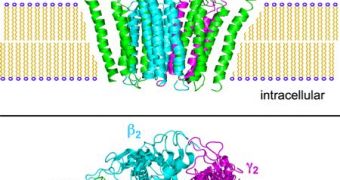The human brain is a very complex construct, and one that is able to analyze the situations it finds itself in rationally. When this does not happen, adverse effects occur, such as falling for a lie and being misled, or experiencing stress and fear. Exposure to stress – in the sense of adverse stimuli – can lead directly to fear, and the way the brain regulates its own response to these factors, and inhibits fear in the end, has remained somewhat of a mystery for researchers. Regardless of the actual mechanisms involved, the Gamma-aminobutyric acid (GABAA) seems to be involved in the processes to some extent.
GABAA is the main inhibiting chemical in the human brain, and scientists have hypothesized for a long time that it may play a crucial role in suppressing fear. According to a new scientific study, published in the latest issue of the respected journal Biological Psychiatry, it may be that GABAA receptors are inserted into the cell surface, during the extinction of fear learning. This takes place in the cells of the amygdala, a region of the brain that has been associated with integrating fear and fear response in many previous studies.
The paper, called “Block of gamma-Aminobutyric Acid-A Receptor Insertion in the Amygdala Impairs Extinction of Conditioned Fear,” was authored by Hui-Ching Lin, Sheng-Chun Mao, and Po-Wu Gean. All of the scientists hold appointments at the National Cheng Kung University in Taiwan, at the Center for Gene Regulation and Signal Transduction Research (CGRSTR) Institute of Basic Medical Sciences, and the Department of Pharmacology.
“This research provides evidence that we are starting to untangle the molecular mechanisms through which our cognitive and behavioral therapies might alter brain function,” the Editor of Biological Psychiatry, Dr. John Krystal, comments about the new study. Lin and colleagues discovered in their tests that, when fear cues were dissociated from unpleasant stimuli, the number of GABAA receptors on the surface of the amygdala neurons increased, AlphaGalileo reports.

 14 DAY TRIAL //
14 DAY TRIAL //